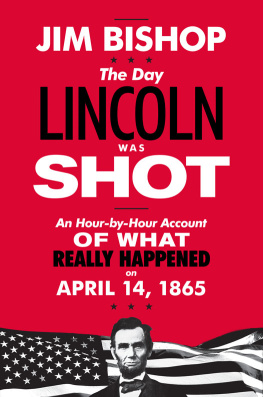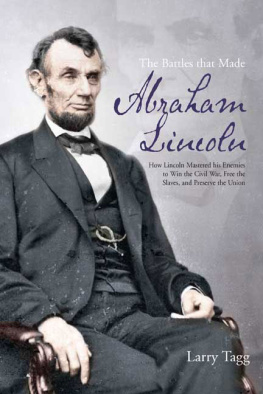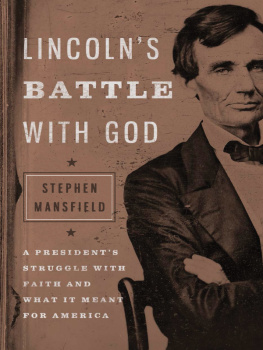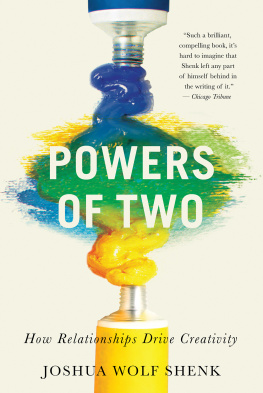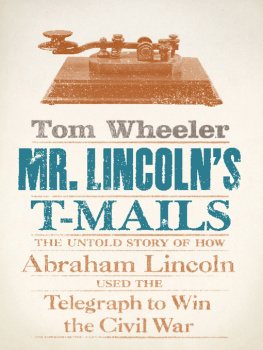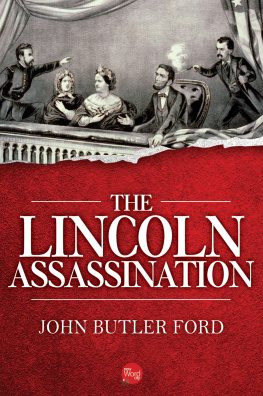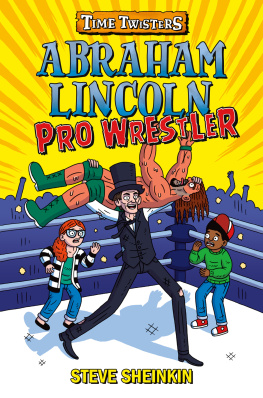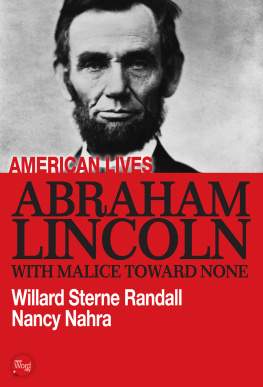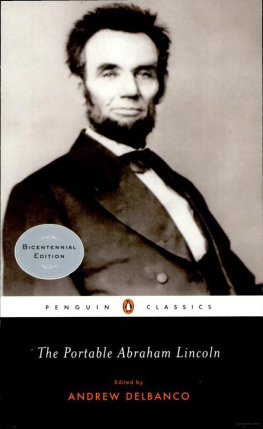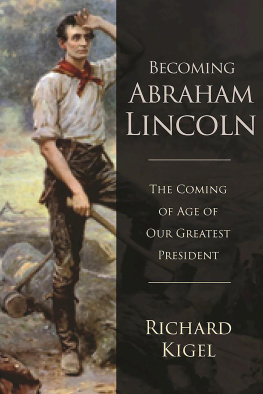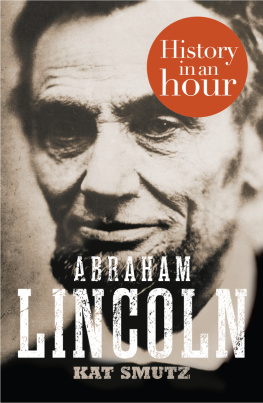Lincoln Abraham - The Day Lincoln Was Shot
Here you can read online Lincoln Abraham - The Day Lincoln Was Shot full text of the book (entire story) in english for free. Download pdf and epub, get meaning, cover and reviews about this ebook. City: New York;United States, year: 2013, publisher: HarperCollins;Harper Perenial, genre: Non-fiction. Description of the work, (preface) as well as reviews are available. Best literature library LitArk.com created for fans of good reading and offers a wide selection of genres:
Romance novel
Science fiction
Adventure
Detective
Science
History
Home and family
Prose
Art
Politics
Computer
Non-fiction
Religion
Business
Children
Humor
Choose a favorite category and find really read worthwhile books. Enjoy immersion in the world of imagination, feel the emotions of the characters or learn something new for yourself, make an fascinating discovery.
- Book:The Day Lincoln Was Shot
- Author:
- Publisher:HarperCollins;Harper Perenial
- Genre:
- Year:2013
- City:New York;United States
- Rating:3 / 5
- Favourites:Add to favourites
- Your mark:
- 60
- 1
- 2
- 3
- 4
- 5
The Day Lincoln Was Shot: summary, description and annotation
We offer to read an annotation, description, summary or preface (depends on what the author of the book "The Day Lincoln Was Shot" wrote himself). If you haven't found the necessary information about the book — write in the comments, we will try to find it.
The Day Lincoln Was Shot — read online for free the complete book (whole text) full work
Below is the text of the book, divided by pages. System saving the place of the last page read, allows you to conveniently read the book "The Day Lincoln Was Shot" online for free, without having to search again every time where you left off. Put a bookmark, and you can go to the page where you finished reading at any time.
Font size:
Interval:
Bookmark:
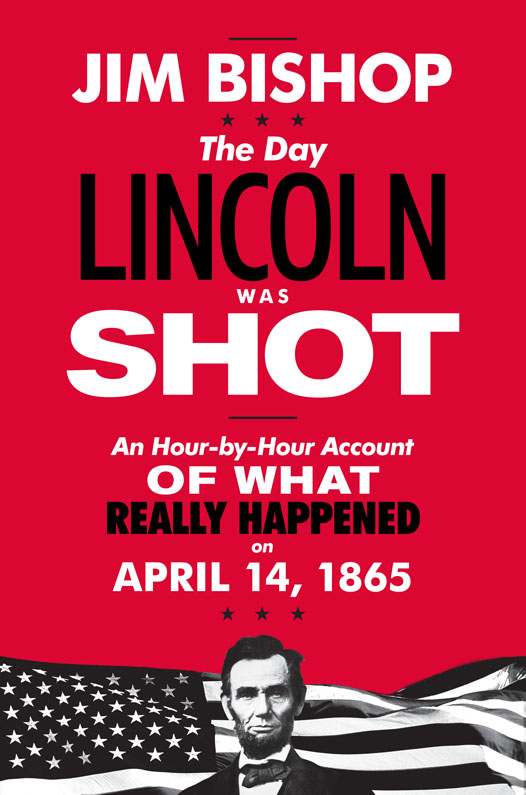
Dedicated to My Dearest Friend
John M. Bishop
Who Is Also My Father
Good Friday was the day
Of the prodigy and crime,
When they killed him in his pity,
When they killed him in his prime....
... They killed him in his kindness,
In their madness in their blindness,
And they killed him from behind....
He lieth in his blood
The Father in his face;
They have killed him, the forgiver
The Avenger takes his place....
There is sobbing of the strong,
And a pall upon the land;
But the People in their weeping
Bare the iron hand:
Beware the People weeping
When they bare the iron hand.
Herman Melville
This is a book about a day, a place and a murderand about a wide variety of men and women. It begins with the casual and somewhat late good morning of President Abraham Lincoln outside his bedroom door at 7 A.M. on Friday, April 14, 1865, and it ends at 7:22 A.M. the following morning when, as Surgeon General Barnes pressed silver coins to the Presidents eyelids, Mrs. Lincoln moaned: Oh, why did you not tell me he was dying!
The elapsed time is twenty-four hours, twenty-two minutes. To many people, this is the single most dramatic day in the life of the Republic. It has been written about before, as a chapter of a book, or a part of a chapter and once in a terse volume written by John W. Starra volume which ended at 8 P.M. Some of these passages have been beautiful and moving and some have been skimpy and vague and laden with unsupported suspicion. Some of the lurid journalists, feeling that there was not sufficient natural drama in the violent death of Lincoln, filled in the blank spots of this day with imaginings, and the story of the assassination, in time, became so interlarded with fiction that the principal assassin, John Wilkes Booth, became a minor character.
In addition to the chapters dealing with specific hours of the day and night, I have included here two chapters of background in a section entitled The Days Before. I have been reluctant to interrupt the narrative with the insertion of this background section, but have been persuaded that this is necessary and useful in placing the events of the day in context.
As a student of President Lincoln and his times, I began, in 1930, to keep notes on the events of this day. The best, and simplest way, I felt, was to keep notebooks labeled 7 A.M. Friday, 8 A.M. Friday, 9 A.M. Friday and so on through 7 A.M. Saturday. That made twenty-five notebooks. In addition, I kept one marked Lincoln and Family, one labeled The Conspirators, one called WashingtonEra, and one marked Bibliography. This must be of small interest to any reader except to point out that, after years of reading and making notes, I found that I had as many as three or four versionseach at variance with the othersof what had happened in any one hour. Two years ago, when I intensified the research and started to read seven million words of government documents, the pieces of the puzzle began to orient themselves. There were still conflicts of time and place and event, and these were eventually reconciled by (1) the preponderance of evidence tending toward one version: (2) the testimony of more than one supporting witness at the trial of the conspirators: (3) the relationship of the event in question with an event that occurred prior to it or immediately after.
Still, I do not believe that this book presents all of the facts, nor anywhere near all of the facts. In the little notebooks today, hundreds of pages are marked void. In the multitude of trial records, documents and books, there are many blank places although, to compensate for this, I must acknowledge that many of the witnesses supplied sufficient material so that conversations could be reconstructed in dialogue without straining the quotation marks. In fact, the only liberties I have taken are in describing facial expressions (he scowled; Booth looked tired, etc.) and in describing what certain characters thought, although in each case the thought is based on knowledge of facts then in the possession of the character. Other than that, this book is pretty much a journalistic job.
To insure that the book should be factually sound, galleys were sent to such Lincoln scholars as Bruce Catton, Stefan Lorant, and Harry E. Pratt, Historian of the Illinois State Historical Library. I hope that their suggestions and their challenges have been met and that the book is better, smoother and more sure of itself because of their ministrations.
Sometimes, small facts become elusive. For example, I assumed all along that Lincolns office was on the ground floor of the White House. It did not occur to me to challenge this until I read in a Carl Sandburg book that the President was informed, in his office, that people were waiting downstairs. The book was nearly complete when, through the kind offices of Congressman Frank Osmers (N.J.), it was put beyond dispute that Lincoln worked upstairs, not down. Another small fact is that most writers assumed that Booth, in his escape from the alley behind Fords Theatre, spurred his mare up the alley to F Street, and turned right. It did not occur to me to question this until I learned, in an old document, that a wooden gate, used as a billboard, closed the F Street exit and that the assassin would have had to ride up the alley, halt, dismount, open the gate, and then flee. In Fords Theatre, a National Parks guard told me that the alley, in 1865, formed a T, and that John Wilkes Booth was aware of the gate at F Street and had not used it, turning instead down the other leg of the alley to Ninth Street, and thence right to Pennsylvania Avenue. In the library at the back of Fords Theatre, this guard had an old government pamphlet which proved the point.
For help in amassing the material for this book, I am indebted to Mr. Evan Thomas, Managing Editor of Harper & Brothers; Mrs. Phyllis Jackson of Music Corporation of America; Miss Olive Tambourelle of the Teaneck, New Jersey, library; Mr. Robert Hug of the New York Public Library; the Illinois State Historical Society; to the Esso people for a fine street map of Washington; to Gayle Peggy Bishop, age ten, for facing thousands of pieces of carbon paper in one direction; to Virginia Lee Bishop, seventeen, for believing that no one but her father could have written this particular book.
Jim Bishop
Teaneck, New Jersey
* * *
The polished rosewood door swung back and the President of the United States came from his bedroom. He nodded to the nightman in the hall and said Good morning. He fingered his big gold watch, anchored to the chain across his vest, but he did not look at it. The hour of seven was late for Lincoln. Many a time, the guard remembered, the President was downstairs working at six.
The big man started down the hall slowly, like a person older in years, the legs perpetually bent at the knees, the black suit flapping about the frame. He looked like a man who did not feel well. The circles under his tired eyes were pouched; the skin of his face was almost saffron; the scraggly black beard thinned and died as it approached the hairline; the hair itself was almost combed; the feet moved with conscious effort, barely lifting off the red pile rug before being set down again; the thick lips, more brown than red, were pulled back in a semi-smile.
He saw the men ahead. There was no way to avoid them. The guards could not seem to keep them out, and many of them slept in the White House hall. The word had passed that he was coming, and so they were on their feet and smiling. Each of these wanted a favor. As he passed, hardly pausing, they asked for jobs or passes to Richmond or the commutation of a military sentence or presidential approval of an illegal business deal. In four years of living in the White House, Mr. Lincoln had become accustomed to the morning vultures. He could do little to be rid of them, and he had no desire to help them because, if their claims were just, they would have had satisfaction at the proper agency.
Font size:
Interval:
Bookmark:
Similar books «The Day Lincoln Was Shot»
Look at similar books to The Day Lincoln Was Shot. We have selected literature similar in name and meaning in the hope of providing readers with more options to find new, interesting, not yet read works.
Discussion, reviews of the book The Day Lincoln Was Shot and just readers' own opinions. Leave your comments, write what you think about the work, its meaning or the main characters. Specify what exactly you liked and what you didn't like, and why you think so.

